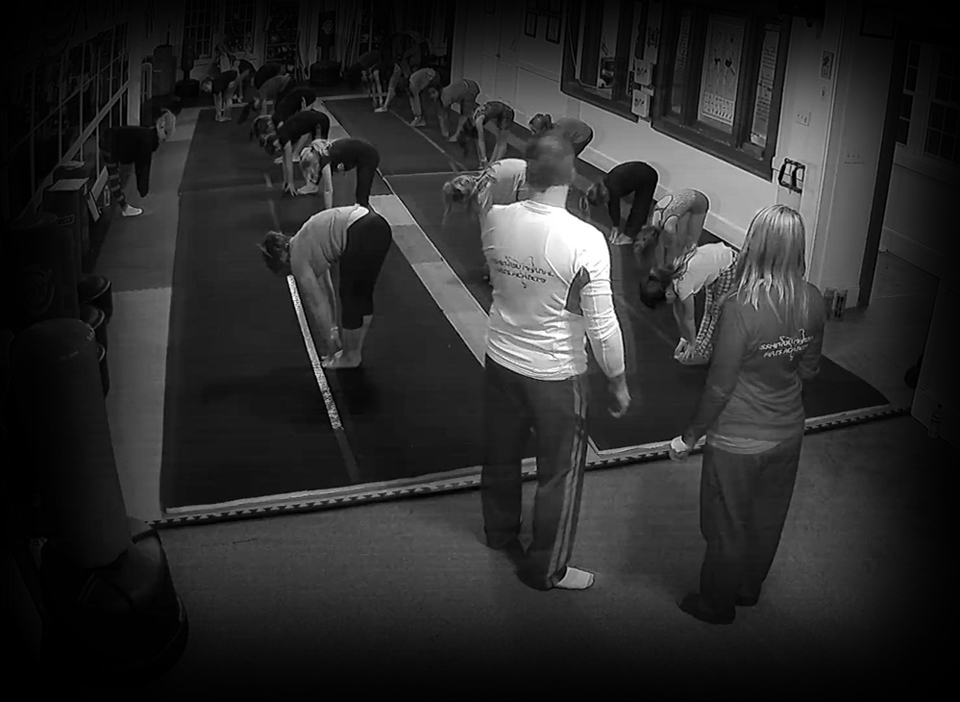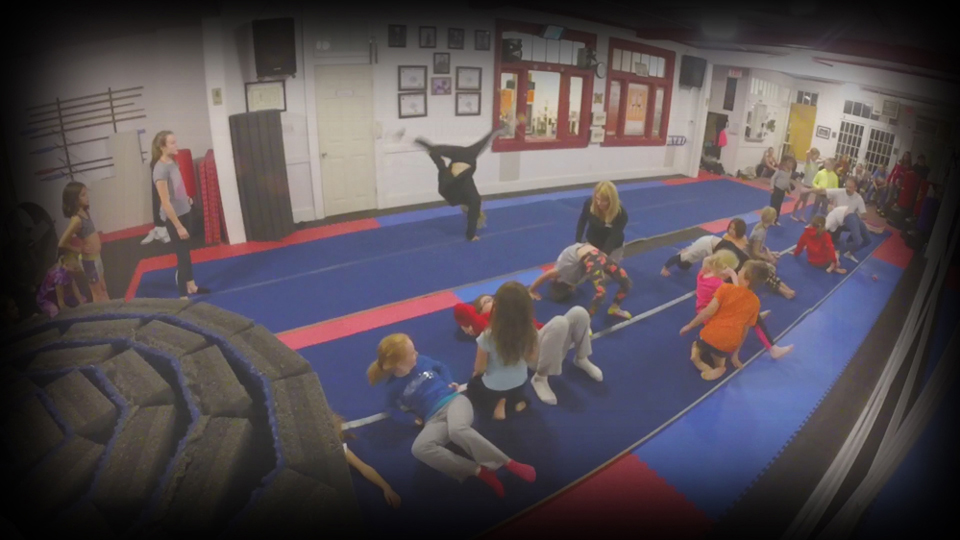Tumbling, also known as power tumbling, is an acrobatic sporting discipline which combines skills of artistic gymnastics with those of trampolining. It is sometimes practiced on a 25-meter-long spring track. Tumbling, which originated for entertainment purposes, is now codified, regulated, judged, and performed using standardized special acrobatic equipment. Competitors, both male and female, perform two passes, each containing eight skills, along the track. Passes usually begin with a Round-off, Barani or Rudi (the Barani and Rudi are forward, twisting somersaults) which is followed by a series of back-handsprings and/or whips (a fast, long back somersault done in a straight body position) ending in a 'dismount' skill. In competition, only feet and hands are allowed to make contact with the track. Governed by rules established by the Fédération Internationale de Gymnastique, tumbling is one of the gymnastic disciplines. Elements of tumbling are also practiced on floor exercise by participants of both Women's Artistic Gymnastics and Men's Artistic Gymnastics. Tumbling elements, such as the round-off and back-handspring (flip), are commonly integrated into the balance beam routines of gymnasts. Tumbling has been an Olympic event only once, at the 1932 Summer Olympics, and was a demonstration event in 1996 and 2000. However, it is one of the events of the World Games and is an annual World Championships held in conjunction with the Trampoline World Championships.
Basic tumbling moves
Punch fronts • Back handsprings • Roundoffs • Roundoff back handsprings • Layouts • Front fulls • Double fulls • Standing fulls • Baranis • Whips • Double backs • Tucks .




